CA/SA Profile thread.
- Thread starter bigspizz
- Start date
You are using an out of date browser. It may not display this or other websites correctly.
You should upgrade or use an alternative browser.
You should upgrade or use an alternative browser.
So they’re inbred, is that why they’re not as robust?Common name: Blue Dempsey, Electric Blue Dempsey
Scientific name: Archocentrus octofaciatus, var. blue
Origin: Veracruz, Mexico to Honduras (aquarium accidental discovery by Hector Luzardo)
Adult Length: 8 to 10 inches
Minimum Tank Size: 55 gallon
Sexing: Difficult without vent examination
Diet Requirements: Not a picky eater...typical carnivore faire will do just fine. Cichlid pellets, earthworms, beefheart, feeder fish, etc...
General Information: Easily labeled as one of the most beautiful freshwater fish in the hobby, not much scientific data is available for the Blue Dempsey also commonly called the Electric Blue Dempsey. As a result, internet "hearsay" including falsehoods have spread and become prevalent beliefs. One of these falsehoods is the belief that this fish is a hybrid which is not true. Electric Blue Dempseys are a natural occurring variant of the Jack Dempsey, a popular aquarium fish from Central America. The fact is that the variant was not recognized and developed until recent years after being accidently discovered in an aquarium by Hector Luzardo. It is thought that the species was missed previously due to early breeders of Jack Dempseys considered the smaller "blueish" fry to be runts and were generally culled from their spawns. What is known now is that the blue variant fish grows somewhat smaller than the regular Dempsey and while still a territorial cichlid, they are less agressive than the other.
The principle reason that Electric Blue Dempseys are not widely available on the market, and that prices remain high for the species ($30-$60), is due to the fact that breeding Jack Dempseys to achieve Blue Dempseys is a tricky proposition. Two blues bred together will not produce a full blue offspring. To achieve full blue offspring, you must first start with a blue male and breed him with a regular color female Jack Dempsey. The offspring that this pair creates will appear as regular Jack Dempseys, but the difference is that they will carry the blue gene. This group of fish must now be grown out to the size where a female can be determined and selected and bred back to the original blue male. The offspring of this pairing will produce an indeterminant number of true blue variant fish. Obviously a project like this is not for the faint of heart and will require enormous growout type of facilities.
5" Ebjd
View attachment 343579
One question, I know it’s an old thread but someone else might see this, I always thought that the original green terror was the stalsbergi and the common green terror in the trade was the rivulatus. Which is it or am I correct?Call the fish whatever you like, but regardless of it's fin trim coloration, it is the very same species. To quote The Cichlid Room Companion: "Although populations with exclusively white and orange margins, respectively, have also been observed, this is often a polymorphic character. Specimens with white, yellow, and orange margins occur in the same habitat (ie. Werner & Stawikowski, 1985). Additionally, such variation is also known from other Andinoacara."
Actually the common name silver saum orriginally refferred to the fish, now described as Andinoacara stalsbergi. A fish that is easily distinguished from the common greeen terror ( Andinoacara rivulatus) by it's much different reverse scale pattern.
Darienheros (Cichlasona) calobrense (Meek & Hildebrand, 1913)
aka Amphilophs calobrense Kullander 1996
Rican (et al) Darienheros calobrensus 2016
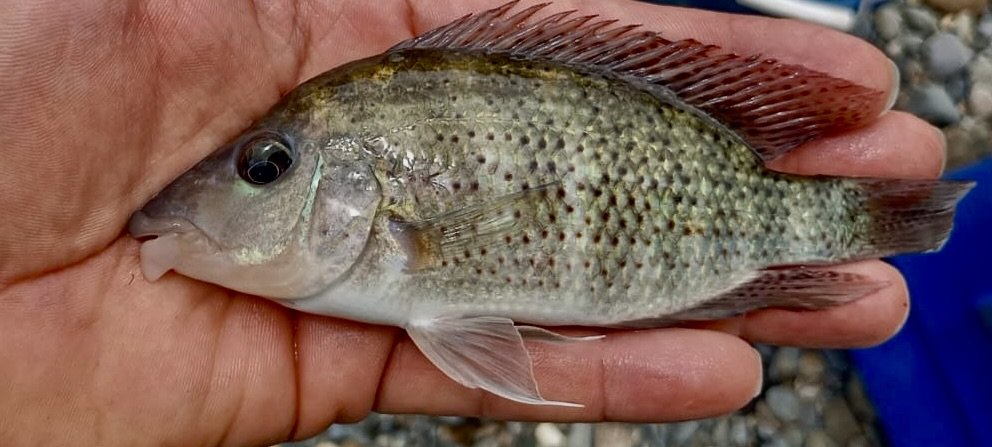
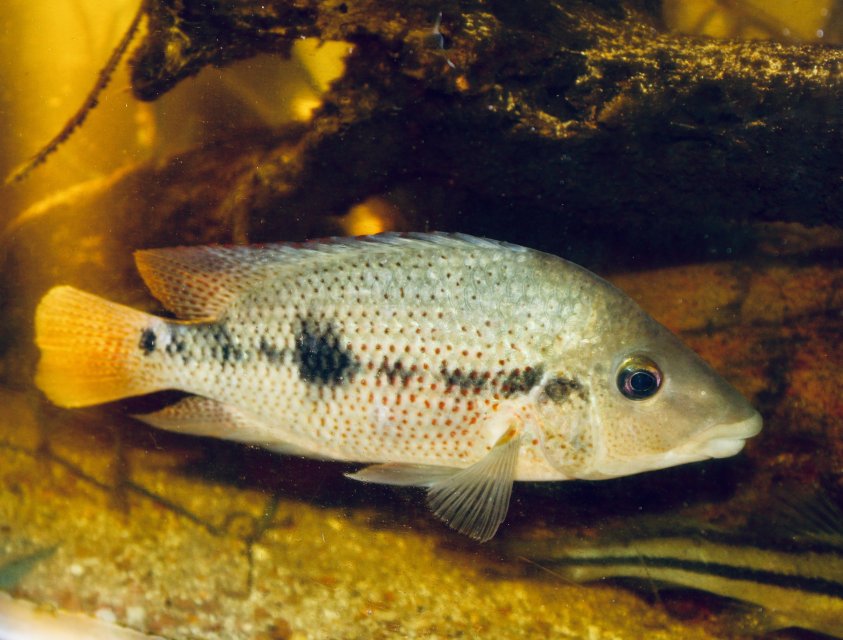
Found from the Rio Mamoni, only in Panama eastward into the Darien gap
This species is Rheophillic usually caught where water flow is quite strong,
max size in nature is approximately 8¨ (20 cms), but it can out grow this size in aquaria
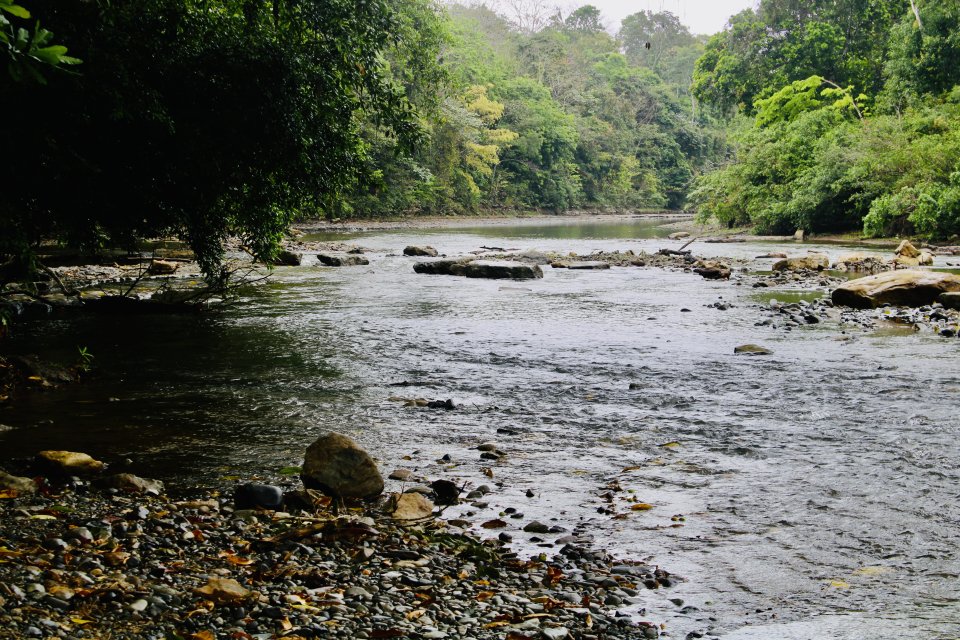
water is normally well aerated, with a pH no lower than 8, in water temps that hover around 80¨F (26¨C)
They also are usually caught where water flow is quite strong., with nitrates always registering undetectable levels, even though at times the turbidity may appear muddy brown during the rainy season.
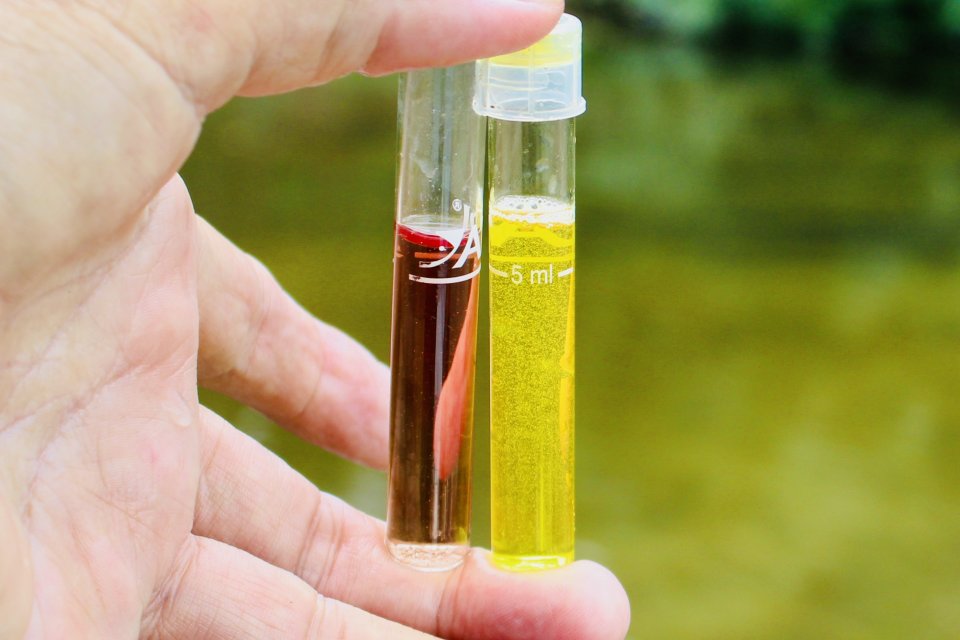
pH left tube, nitrate right tube
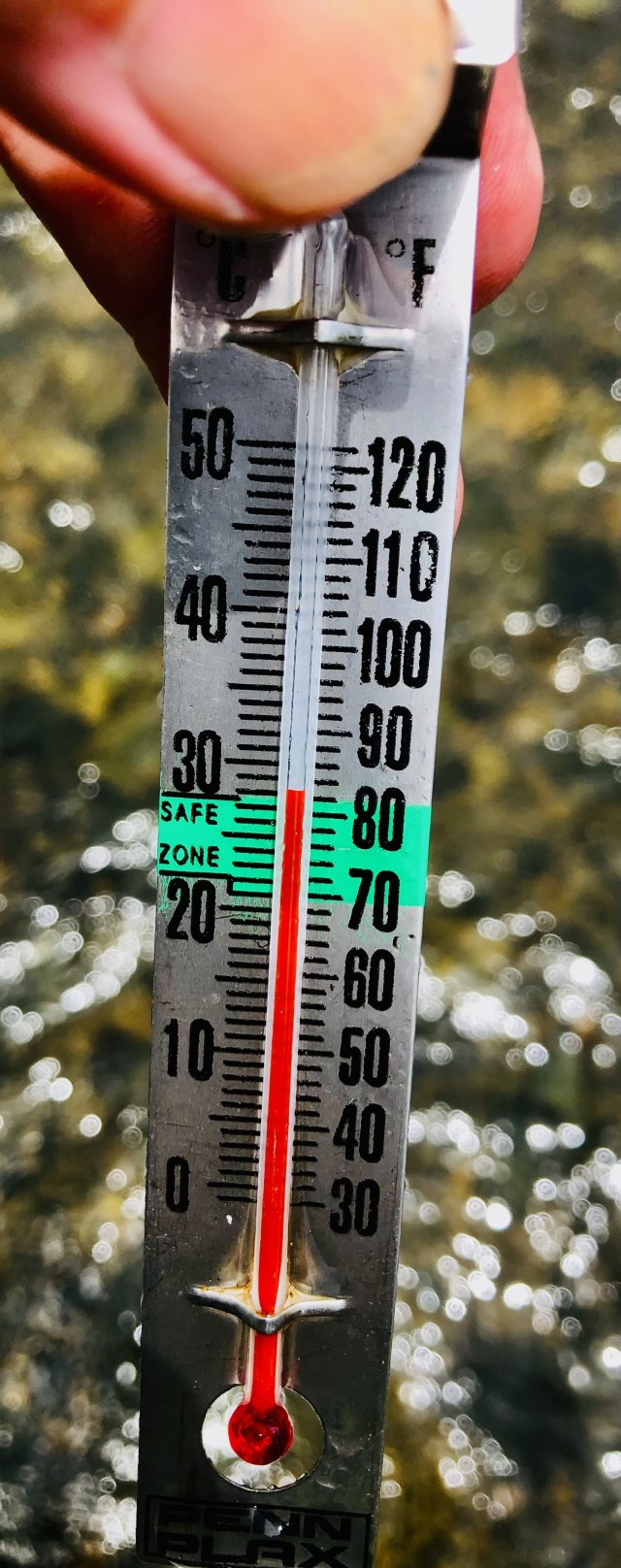
It is a sand sifter, feeding upon small animals such as freshwater shrimp, snails and insect larvae in the substrate, and7or lodged between stones.
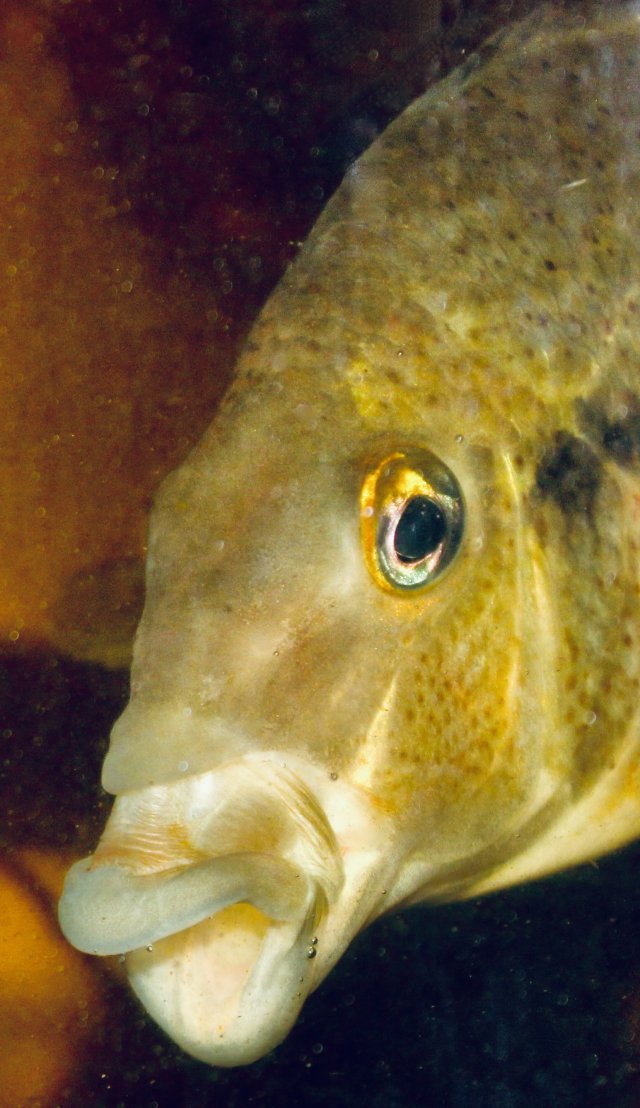
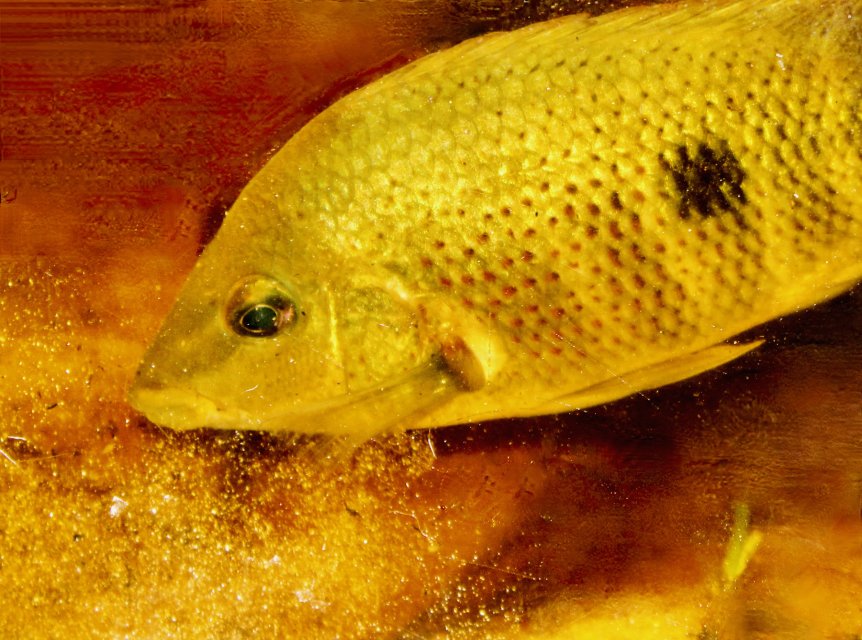
Variants found in smaller streams with overhanging vegetation often appear darker in color than those in more open areas, such as the wide Rio Mamoni above.
Below a few darker individuals from th Rio Uni.
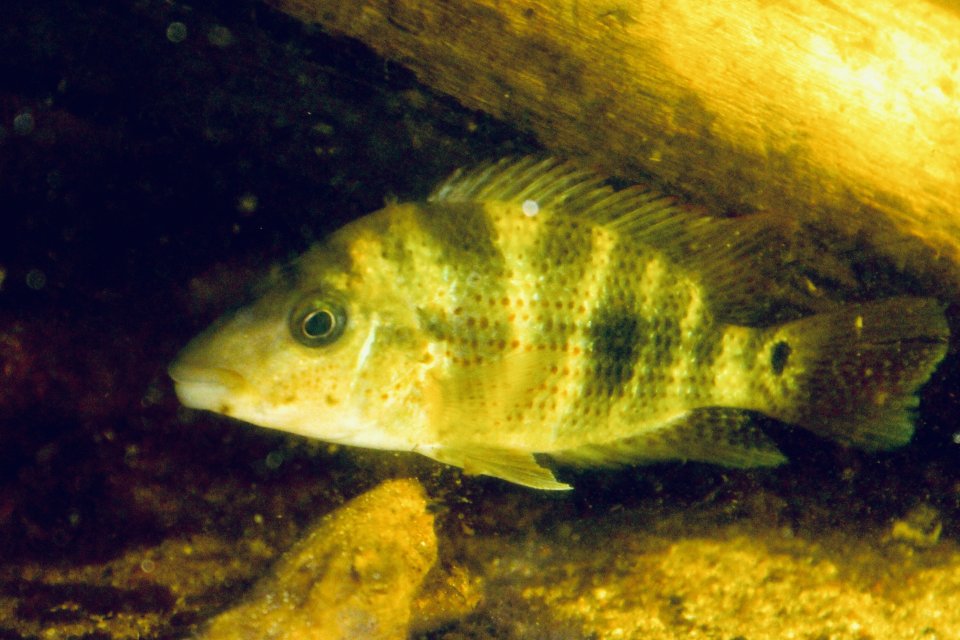
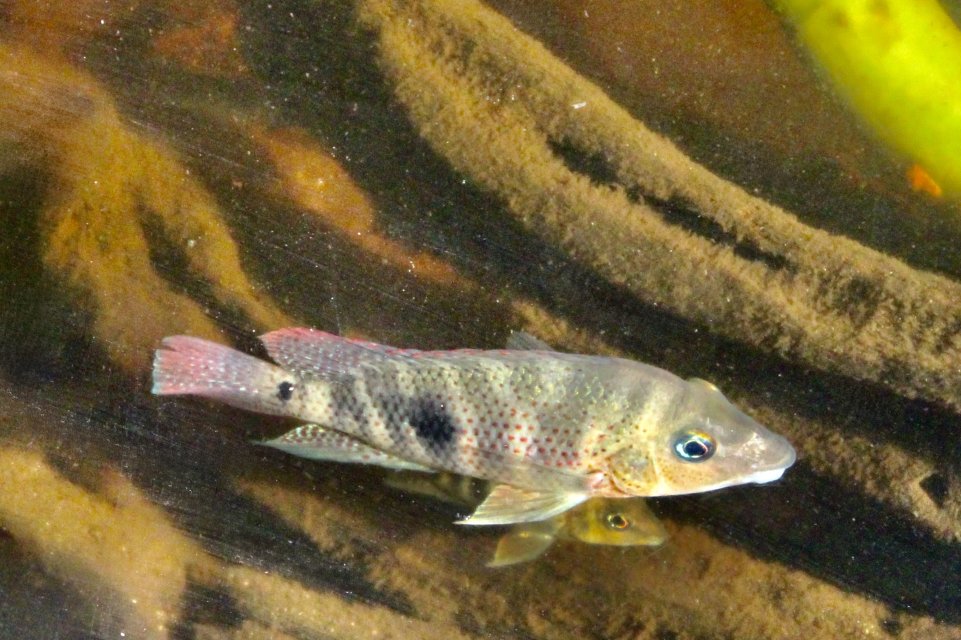
Rivers where I find Darienhers, are shared with Andianacara coeruleopunctatus, but the calobrensus prefer faster flowing areas than the more placid areas where Andiianacara congregate, and in the Bayano drainage Isthmoheros tuyrensus can also be found with them.
I have yet to find, any other cichlid in 2 years of collecting.
Tetras such as Roeboides and other Characins abound in their same habitat, perheps 50 to 1 , to each indivulal cichlid, and a number of substrate huggers, such as plecos and gobies in lessor populations, Chaetostoma, Sturomatichthys (Whip tails.) and gobies in the genus Awaous, and Pimeludus catfish .
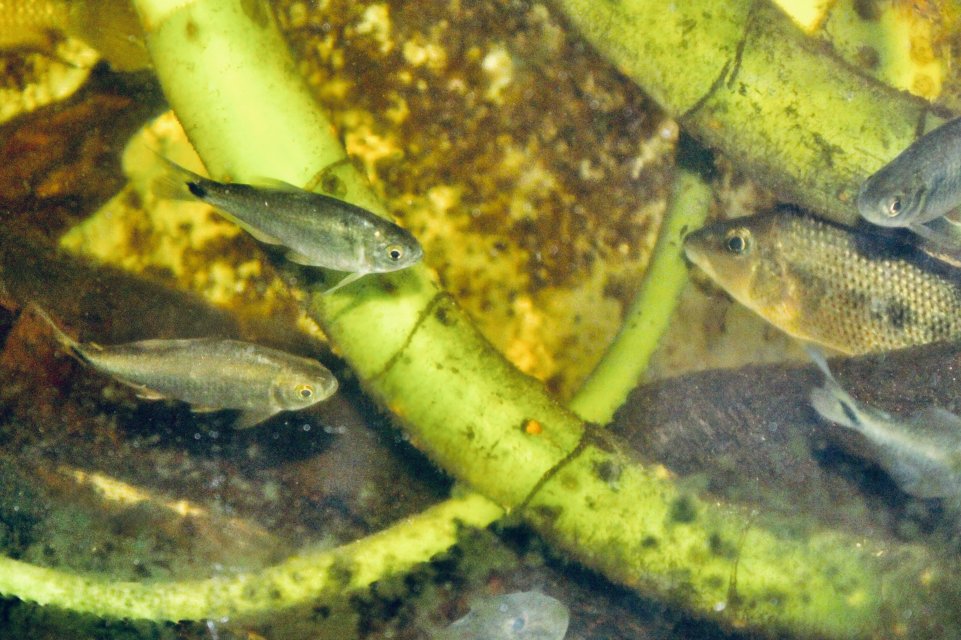
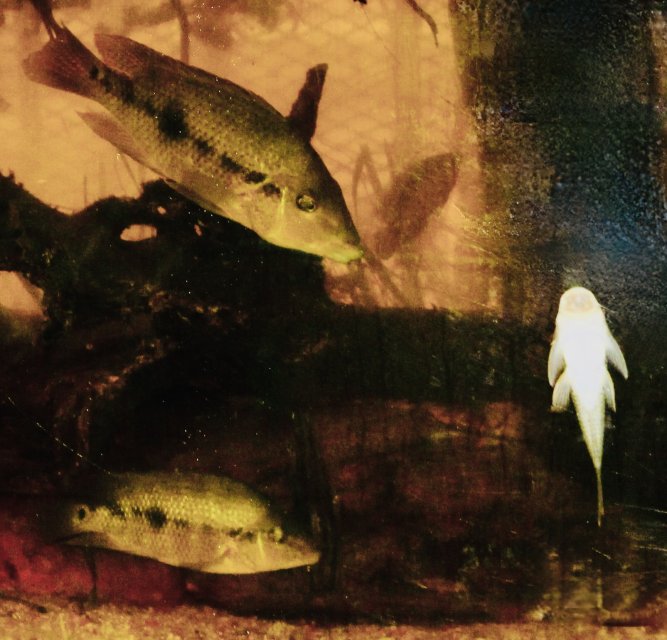
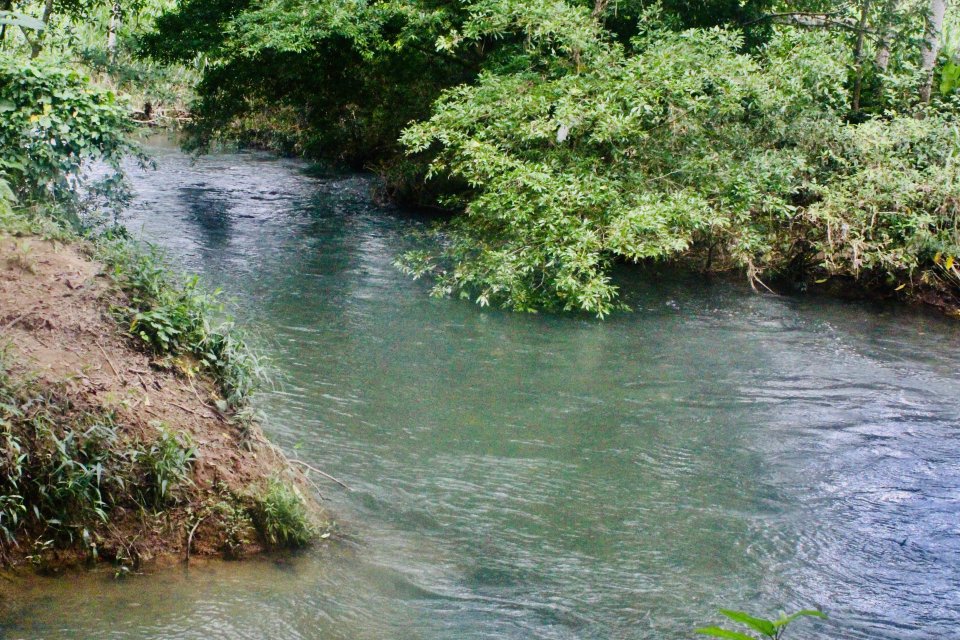
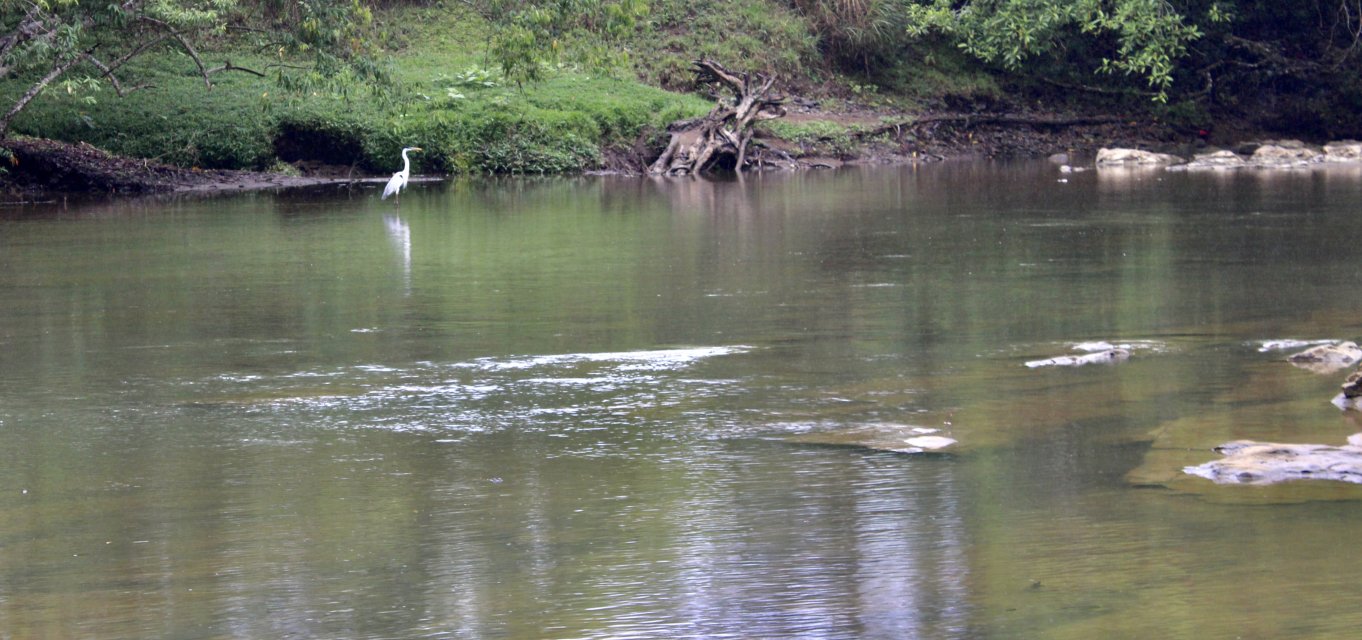
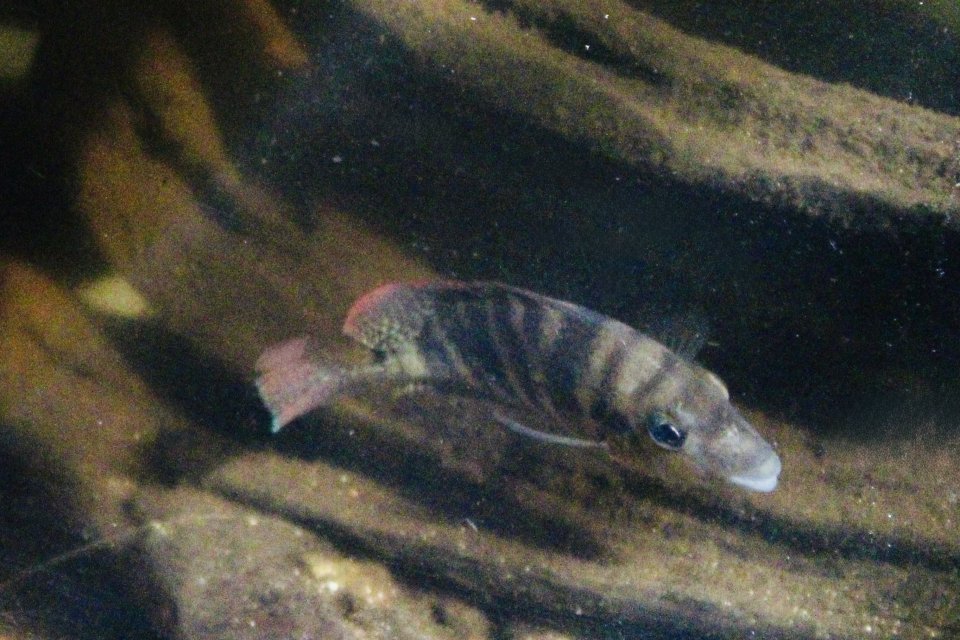
aka Amphilophs calobrense Kullander 1996
Rican (et al) Darienheros calobrensus 2016


Found from the Rio Mamoni, only in Panama eastward into the Darien gap
This species is Rheophillic usually caught where water flow is quite strong,
max size in nature is approximately 8¨ (20 cms), but it can out grow this size in aquaria

water is normally well aerated, with a pH no lower than 8, in water temps that hover around 80¨F (26¨C)
They also are usually caught where water flow is quite strong., with nitrates always registering undetectable levels, even though at times the turbidity may appear muddy brown during the rainy season.

pH left tube, nitrate right tube

It is a sand sifter, feeding upon small animals such as freshwater shrimp, snails and insect larvae in the substrate, and7or lodged between stones.


Variants found in smaller streams with overhanging vegetation often appear darker in color than those in more open areas, such as the wide Rio Mamoni above.
Below a few darker individuals from th Rio Uni.


Rivers where I find Darienhers, are shared with Andianacara coeruleopunctatus, but the calobrensus prefer faster flowing areas than the more placid areas where Andiianacara congregate, and in the Bayano drainage Isthmoheros tuyrensus can also be found with them.
I have yet to find, any other cichlid in 2 years of collecting.
Tetras such as Roeboides and other Characins abound in their same habitat, perheps 50 to 1 , to each indivulal cichlid, and a number of substrate huggers, such as plecos and gobies in lessor populations, Chaetostoma, Sturomatichthys (Whip tails.) and gobies in the genus Awaous, and Pimeludus catfish .





Last edited:


